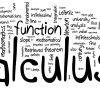 71
71I had done it earlier by COUNTING the cases.. as for examples.
No. OF AP's with Common difference 1 :
(1,2,3) , (2,3,4) ........ (28,29,30) = 28
No. OF AP's with Common difference 2 :
(1,3,5) , (2,4,6) , ....... (26,28,30) = 26
and so on...
It is easy to count so then find the Probability.
 341
341http://www.goiit.com/posts/list/algebra-show-that-the-number-of-ways-in-which-three-numbers-978602.htm
 1
1are we supposed to learn this general result? Or is there some other way to do this problem?
So I get 100/C213 as the answer.
 71
71U got the approach now generalize it. Use General Result!
 1
1yesterday i was also doing a similar kind of problem in TMH, but in that the question was that we had to choose three numbers from 1,2,3...31 and find the probablity,p that they are in AP and report it as 133p, i developed a sort of logic like suppose we choose any number i, then depending on whether i is even or odd, we can have 31-i/2 AP's with i as first term and i is odd and 30-i/2 AP's with i as first term and i is even, ( common difference is an integer so considering both the cases when d>0 and d<0, but d is not zero), i got the answer as 15+14+14+13+13+.... 15+2*(1+2+3+...+14) = 15+15*14 = 225*2 and probability as this divided by 31C3 but the answer is not matching please tell where am i wrong????? :( , also going by this chesssunthus ur answer should be 10+9*10 = 100/21C3 and ( prophet sir plz. check link is not working!!!)
 1
1the link is correct and there should be not be any problem in opening it.I have opened it myself.
 71
71You could use induction. Call the number of permutations for [n] as P(n)
It is true for n = 3, 4 etc. So assume it is true for n = k.
If k is even, then  . Now, when the number k+1, an odd number is added, we can have in addition to the APs using only the integers 1 to k, APs in which the number k+1 appears. These A.P.s will have integer common difference ranging from 1 to
. Now, when the number k+1, an odd number is added, we can have in addition to the APs using only the integers 1 to k, APs in which the number k+1 appears. These A.P.s will have integer common difference ranging from 1 to  (because in this case we can have an AP whose first term is 1).
(because in this case we can have an AP whose first term is 1).
Hence, we have  proving the hypothesis for the case k is even
proving the hypothesis for the case k is even
If k is odd,  . Again we are adding APs for all integers ranging from 1 to
. Again we are adding APs for all integers ranging from 1 to  (since the least first term is 2 in this case)
(since the least first term is 2 in this case)
Hence, the number of APs is 
SOURCE: HSBHATT SIR
 1
1When the Nos are in A.P then there is no relative difficulty..Coz there is no scope of the common difference Bieng a fraction..
BUT in case of a G.P. it becomes really difficult as Fractional common ratios are also possible like 4,6,9 which has r=1.5
In that case it is really difficult to find the no of cases
 71
71It is difficult if you try to count it in the way you have done for the AP. Instead do this way.
Since we have, b2 = ac
So,
b b2 ac
1 1 Nil
2 4 (1,4)
3 9 (1,9)
4 16 (1,16),(2,8)
5 25 .....
In this way It will be easier!! :)
 1
1Hmm i see..
The sum i had done had tickets marked till 30
what i had found out was that in all cases where ratio is a fraction, a and c are themselves perfect squares.. e.g. 4,6,9.. 4,10,25.. 9,15,25
And the i picked out a and c from the set of perfect squares and found out the favourable cases
 . Now, when the number k+1, an odd number is added, we can have in addition to the APs using only the integers 1 to k, APs in which the number k+1 appears. These A.P.s will have integer common difference ranging from 1 to
. Now, when the number k+1, an odd number is added, we can have in addition to the APs using only the integers 1 to k, APs in which the number k+1 appears. These A.P.s will have integer common difference ranging from 1 to  (because in this case we can have an AP whose first term is 1).
(because in this case we can have an AP whose first term is 1). proving the hypothesis for the case k is even
proving the hypothesis for the case k is even . Again we are adding APs for all integers ranging from 1 to
. Again we are adding APs for all integers ranging from 1 to  (since the least first term is 2 in this case)
(since the least first term is 2 in this case)